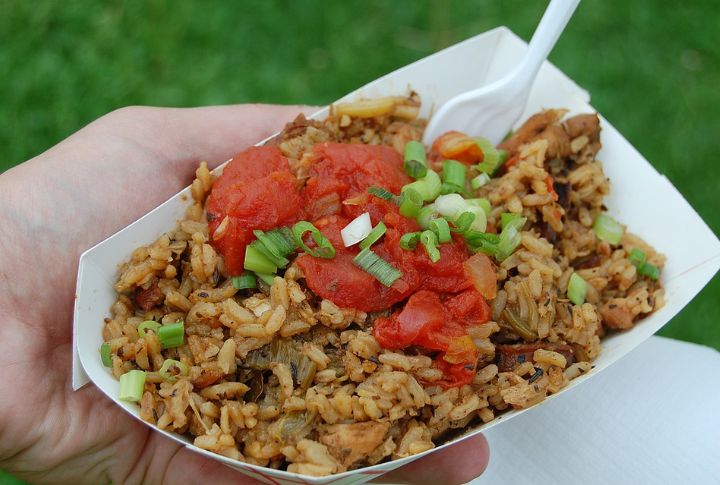
Jambalaya has its rhythm, which a timer cannot track. It reveals itself in rising aromas and how textures shift beneath your spoon. Catch those quiet cues as they unfold, and you’re not just making dinner—you’re bringing out the true essence of Mardi Gras. These 10 clues will show you when your pot is headed for something unforgettable.
Broth Soaks Into Every Grain
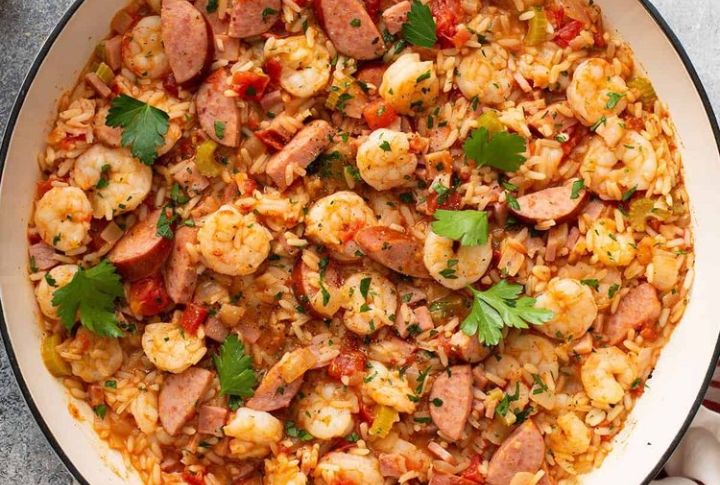
Let the stock melt gently into the rice, slipping between each grain until it disappears completely. The rich broth wraps every bite in warmth and soul as it simmers. Jambalaya finds its heart in absorption—no puddles, just seasoned flavor woven through each spoonful.
Shrimp Turn Pink Just Before Serving
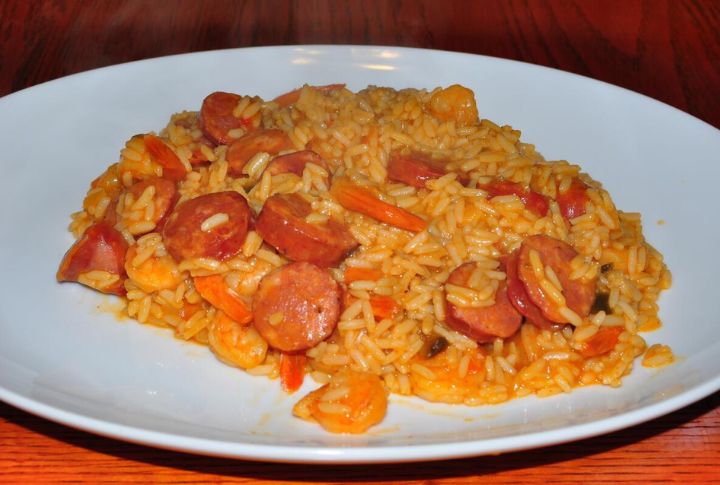
Let the shrimp wait their turn. Drop them in during the final minutes, letting the heat gently coax their curl and rosy hue. Overcooking steals their tenderness fast. In Cajun kitchens, timing is everything; when you nail it, your guests won’t forget.
Tomato Paste Adds Depth, Not Brightness
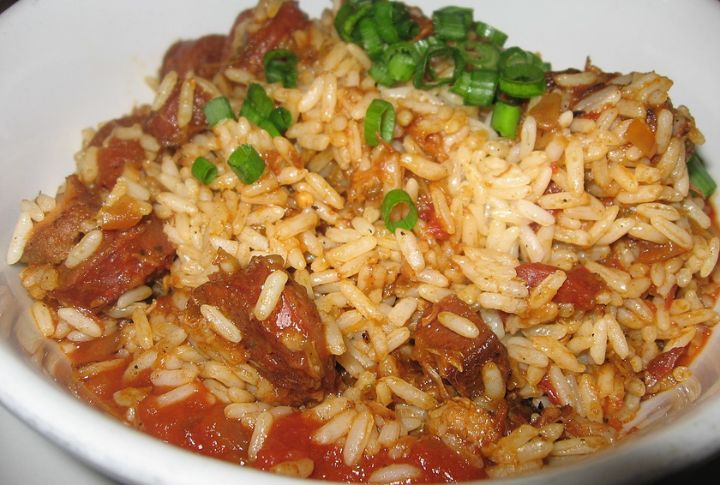
Darkened tomato paste means flavor has arrived, while bright red tells you it needs more time. Saute it long enough to develop that signature earthy-sweet base, especially in Creole versions. Also, remember that Great jambalaya never tastes like marinara.
Oil Separates At The Surface Midway Through
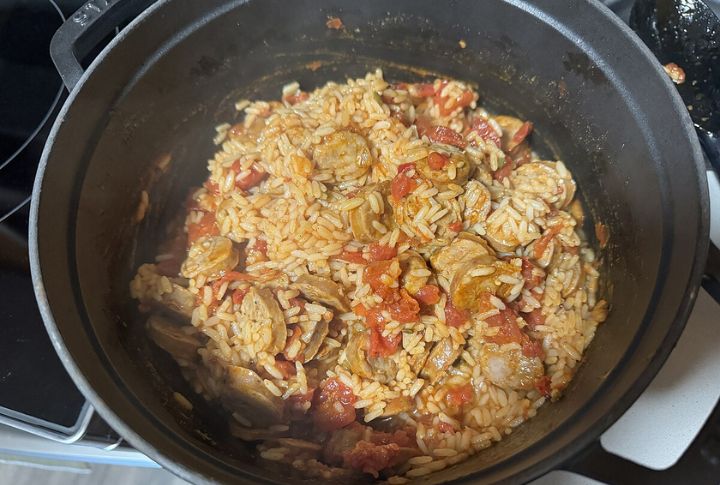
Watch the pot. The base is emulsified when a thin shimmer of oil creeps to the surface. This old-school sign means your seasoning and fat have melded. Traditional Acadiana cooks use this cue to judge readiness. If it glistens, flavor’s locked in.
Every Protein Holds Its Shape
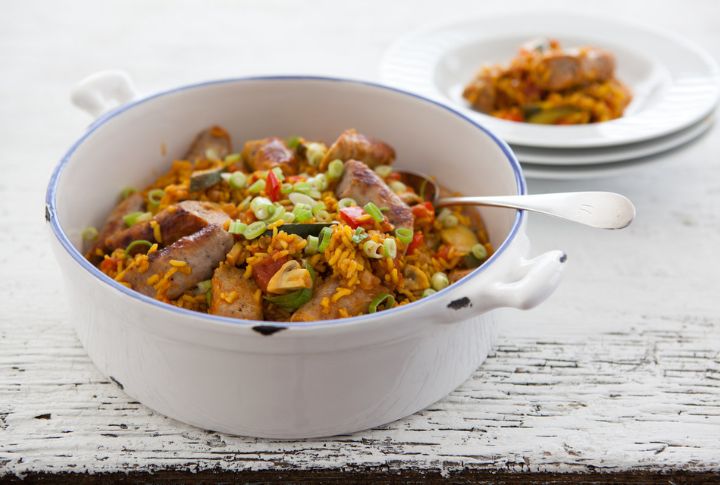
If the shrimp stay plump, the sausage keeps its snap, and the chicken holds together, your jambalaya’s on point. Firm, juicy proteins mean you nailed the cook, and every bite hits with the right texture and bold, savory flavor.
Spices Linger Without Overpowering

In great jambalaya, the spices don’t hit all at once. They ease in and stay awhile. The flavor builds gently, letting each ingredient shine through. Nothing feels too bold or buried, just a steady warmth that sticks with you and keeps you reaching for the next bite.
Steam Escapes In Gentle Puffs, Not Billows
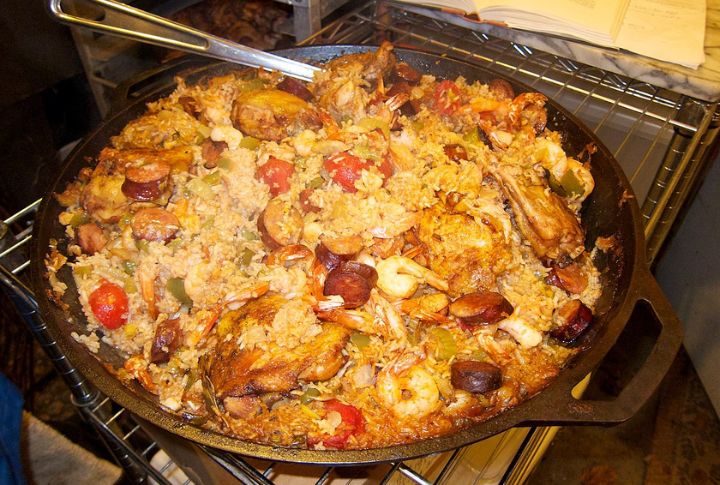
Peek under the lid and watch how steam escapes. Billowing clouds mean too much heat—your rice might burn. Soft, steady puffs say it’s simmering just right. Moisture is evaporating slowly, infusing the pot without rushing the process. Patience isn’t optional; it’s the secret ingredient.
Your Ladle Moves Through Effortlessly

Jambalaya should hug the ladle without fighting it. If it’s soupy, you missed the simmer, and if it’s clumpy, moisture escapes too fast. Always remember when the ladle glides clean, you’re right on track.
Aroma Layers Shift As It Cooks
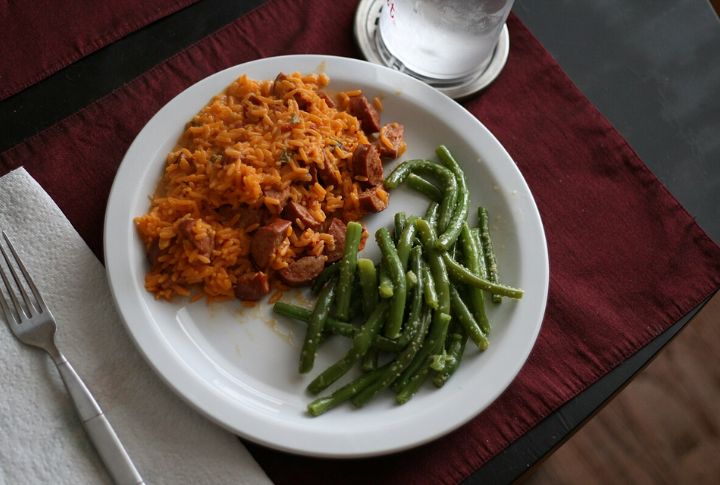
Early on, you’ll smell garlic, onions, and peppers. But as time passes, the scent deepens—smoke from sausage, sweetness from caramelized vegetables, and spice from seasoning. Great jambalaya has stages of aroma, each richer than the last.
You Catch Whiffs Of Bay Leaf Before Stirring

When the bay leaf announces itself before you even touch the spoon, your jambalaya’s core is steeped right. That scent carries through the house like second-line brass. Savor that moment; it means your seasoning rhythm hits the right note.
Leave a comment